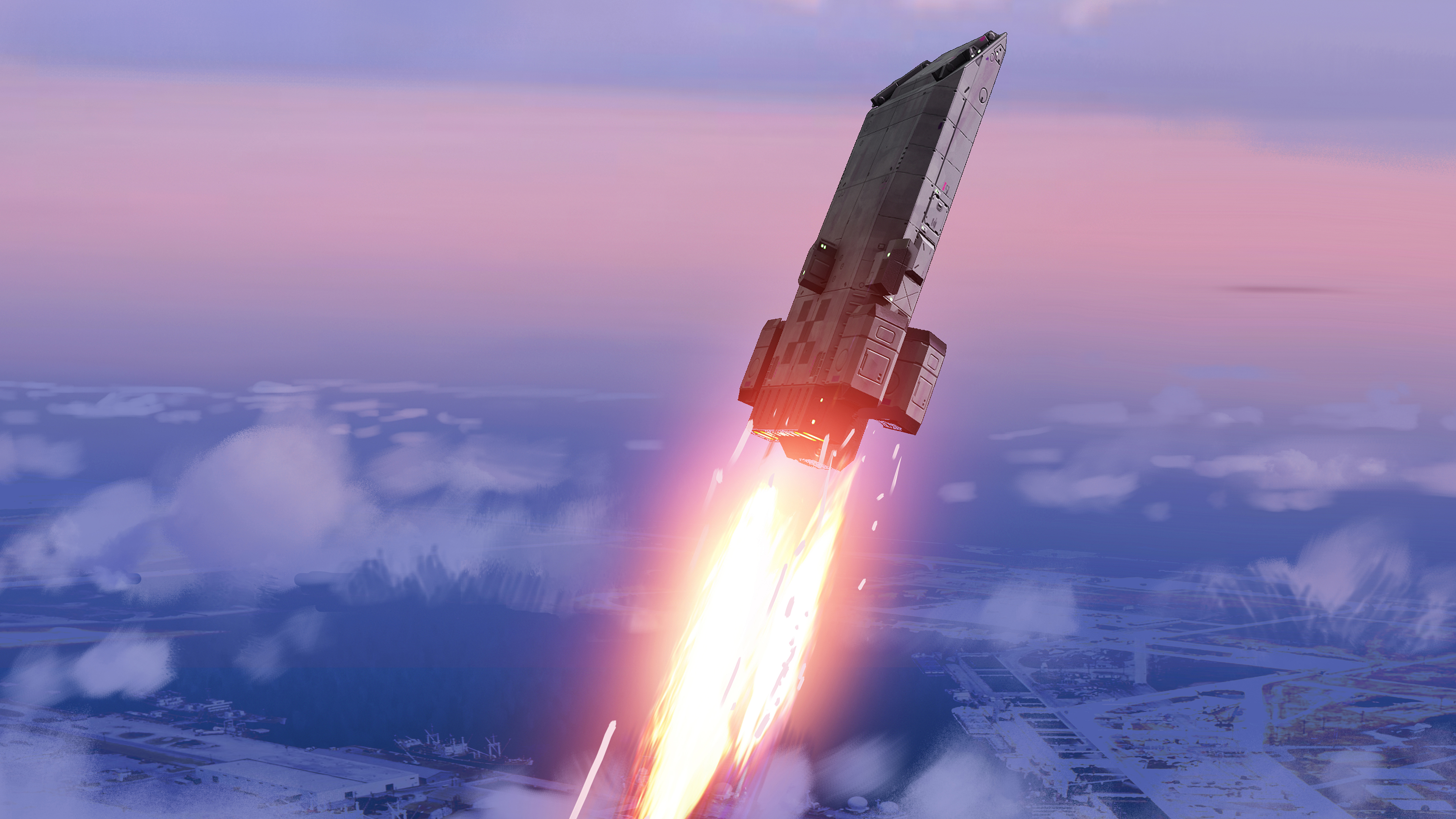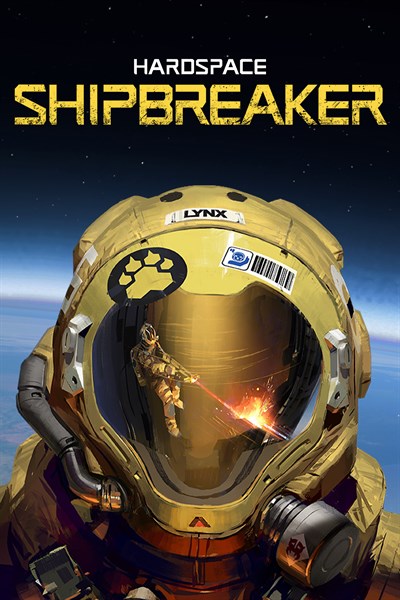Hi everyone! We are Elliot Hudson (Game Director), Chris Williams (Studio Art Director), and Vidhi Shah (Senior UX Designer) at Blackbird Interactive. Our zero-g spaceship-salvaging sandbox game Hardspace: Shipbreaker releases on consoles September 20, and we’re here to share some insider details about how its futuristic world came to be!
A retro jump towards the 2300s
Our vision for Hardspace: Shipbreaker was retrofuturistic – and more specifically inspired by the “cassette futurism” aesthetic which draws from 70s and 80s technology. To build the lore and general context in which the game takes place, we heavily researched emerging technologies and theories about the future of human space travel and the industrialization of space, as well as the history of industry and human labor. To help shape the specific blue-collar shipbreaking setting and the plot related to it, we looked at many different things for inspiration, from the Luddite rebellion, to America’s Gilded Age, the Ironworkers who built the first skyscrapers in the 1920’s, all the way to the modern-day Shipbreakers, particularly in places like Alang Beach in Gujarat.
Hardspace: Shipbreaker is mostly played as a first-person zero-g workplace simulator as you explore the often dangerous inner workings of decommissioned spaceships waiting for salvage. This means establishing the design language of our spaceships was crucial to achieving a sense of immersion, and our extensive research on contemporary seafaring boats and ships was key to making the game’s world feel lived-in and real. We pored over the blueprints for real-world ships, explored and photographed a derelict ferry, and even rented boats to ride alongside massive cargo ships to examine their construction.

As a team of space lovers, we find a lot of challenge and joy in designing striking, iconic designs for the ships in our games. Yet our approach is not just based on the rule of cool (i.e. the idea that in a fictional work “the limit of the Willing Suspension of Disbelief for a given element is directly proportional to its awesomeness”) as we stay immersed in the science of space travel so we can also engage with these designs in practical terms, working out how the game’s ships, tools, and systems might look and function in real life. You can come up with a lot of interesting ideas just by thinking through what a day in the life of one of these workers would be like, and how technology might help or hinder their work.
A relatable future
Striking a balance between futuristic elements and details from our current reality was tough, but we set some ground-rules to make the game’s world internally logical. There is no faster-than-light travel, nor is there teleportation or advanced AI. The industrial challenges of salvaging these ships are mostly solved through brute force.
Although Hardspace: Shipbreaker takes place in the future, our goal was always to show that the tools of labor often look similar, no matter the time period. We looked at existing welding and grinding equipment, and tried to bring that tactile, rough-and-ready look to everything we created for the game, staying away from science fiction technology that looked too sleek or unblemished.
While intentionally heightened and sometimes satirical, the dynamics between the working class and corporations in Hardspace: Shipbreaker are broadly the same as those throughout the history of labor and industry, and it’s easy to see those dynamics at play even today.
Finding the right tone
Mixing references and inspiration is a great way to explore and design your fictional world as you build it, and we often looked toward 80s and 90s Anime for our industrial design to visual effects.
We also had regular movie nights to explore the balance between satire and dystopia. Movies like “Alien”, “Moon”, “Outland”, and even documentaries and dramas like “Brazil”, “Blood on the Mountain”, “Deepwater Horizon”, and the seminal blue-collar, construction site thriller “Steel” from 1979 all helped point us toward different ideas for the game’s setting and tone.

We didn’t stop with movies and television, however. We read the works of John Steinbeck, Ursula K. Le Guin, Joseph Heller, Cory Doctorow, Kurt Vonnegut, and Ray Bradbury throughout the game’s development. We’re far from the first people to explore these themes, and we knew the work that came before us would both help us see what had been done before and what we might be able to offer today’s audiences thinking about the future of work.
The challenges of a zero-gravity physics simulation
Simulating a zero-g environment and providing players with full movement within it is incredibly challenging, but equally fun, to tackle. Our biggest design challenges involved making sure the player understood where things were located in the salvaging environment, as well as keeping inputs minimal and intuitive. We worked on assisting players with spatial cues, such as giving each ship an easily identifiable floor and ceiling.
Technically and artistically, the requirement for all parts of a ship to be destructible and modeled with complex physics meant that each part needed to be a simple, convex shape. The art team did a tremendous job with texture work to overcome this problem of simplified geometry, and our technical team added some sneaky graphical features to “cheat” even more detail on objects.

These are details and design decisions that most players may not notice, but they all work together to give you the information you need to make the best decisions possible as you salvage each ship.
A stimulating move towards first-person experiences
The first-person perspective is a powerful way to help the game’s world feel real and immediate to the player, and many of us on the team are long-time FPS fans. This was a great game in which to make the jump to a first-person perspective and stretch our skills as designers and artists.
To enhance this sense of immersion, we opted for a mostly diegetic UI style and HUD. We wanted to mimic the technology of the Hardspace world; slightly rundown, but also simple and utilitarian. Many of the UI interfaces in the game are modeled after very early monochromatic computers such as the Apple II, and the Player’s HUD in their helmet is modeled primarily after what you’d find in certain fighter jets.

We intentionally went just a bit overboard in conveying large amounts of information to the player in their HUD, and decisions about the limited color palette, visual effects and distortion you see when a player runs into hazards are all there to reinforce the dangers of the job, and the sense that the player is just a small part of a big world that may not have your best interests at heart.
We learned so much working on this project. The first-person perspective shift from our original roots and the physics simulations in Hardspace: Shipbreaker were a crucial part of the experience and sometimes proved trickier than we had anticipated. But it’s also those projects that tend to be the most satisfying: developing a game that not only fits with our core strengths in world building and ship design, but also allows us to stretch out and try new things and grow our expertise as developers. We’re so excited about using everything we learned moving forward as we explore even more varied games and experiences.
Hardspace: Shipbreaker releases September 20 on Xbox Series X|S and is coming Day One to Xbox Game Pass. The game is already available on PC and is included with PC Game Pass.

Hardspace: Shipbreaker
Focus Entertainment
1,252,594,441.92 Credits
Start paying that debt! Good luck, shipbreaker! • Experience daily life as a blue-collar spaceship salvager • Cut and destroy at will in a next-gen physics sim
• Salvage through a compelling campaign, relax in freeplay, or compete in timed challenges
• Explore a variety of ship types with unlimited variations
• Upgrade tools and gear to take on bigger and harder ships
Related:
Grid Legends Brings Action Packed Racing to EA Play This September
Naraka: Bladepoint Rolls Out Huge Updates Including a New Map and Hero
Available Today with PC Game Pass: Quake 4, Wolfenstein 3D, and More

Website: LINK

Schreibe einen Kommentar
Du musst angemeldet sein, um einen Kommentar abzugeben.